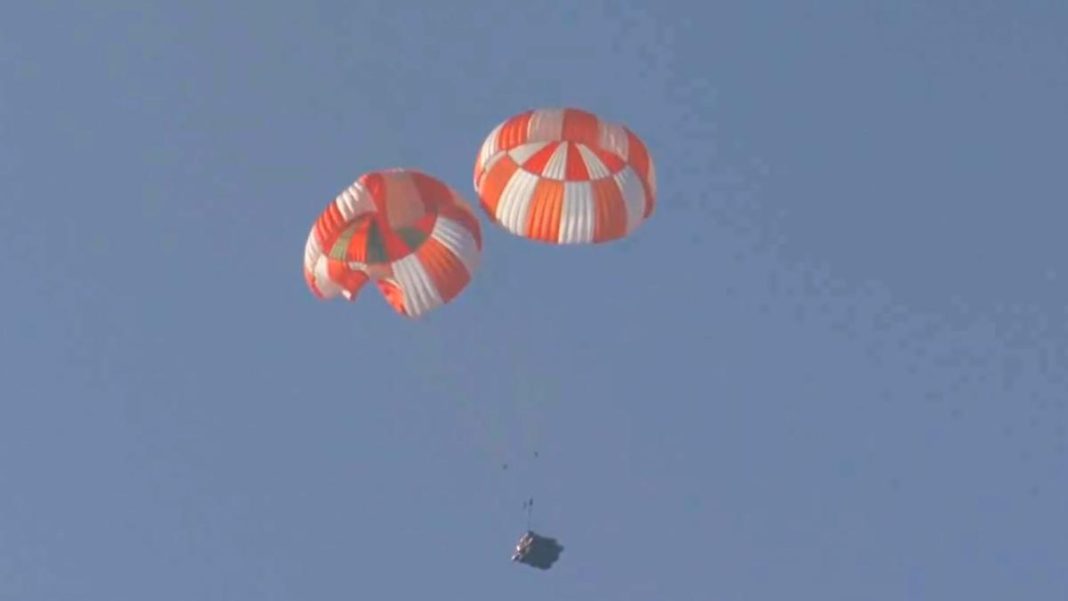Key Takeaways
- ISRO successfully tested Gaganyaan’s main parachute system under extreme delay conditions
- The test validated parachute redundancy where only two of three main parachutes ensure safe landing
- System demonstrated flawless deployment from 2.5 km altitude using IAF IL-76 aircraft
ISRO has successfully completed a critical parachute test for the Gaganyaan Crew Module, validating the system’s ability to handle extreme scenarios during descent. The test conducted on November 3, 2025, at Babina Field Firing Range in Jhansi marks a significant milestone in India’s human spaceflight program.
Complex Parachute System for Safe Landing
The Gaganyaan Crew Module employs a sophisticated 10-parachute system comprising four different types. The descent sequence begins with two apex cover separation parachutes that remove the protective cover, followed by two drogue parachutes for stabilization and deceleration.
ISRO explained: “Upon release of the drogues, three pilot parachutes are deployed to extract three main parachutes, which further slow down the Crew Module to ensure a safe touchdown. The system is designed with redundancy — two of the three main parachutes are sufficient to achieve a safe landing.”
Reefed Inflation Process
The main parachutes deploy using a step-by-step process called reefed inflation. “In this process, the parachute first opens partially, which is called reefing, and then fully opens after a predetermined period of time, known as disreefing. This process is carried out using a pyro device,” the space agency added.
Testing Extreme Scenarios
The recent test specifically evaluated one of the most challenging scenarios – delayed disreefing between two main parachutes. This asymmetric disreefing condition represents a critical load scenario during actual mission descent.
Using an Indian Air Force IL-76 aircraft, a simulated mass equivalent to the Crew Module was dropped from 2.5 km altitude. The parachute system deployed flawlessly, achieving stable descent and soft landing, thereby validating the design’s robustness under extreme conditions.




